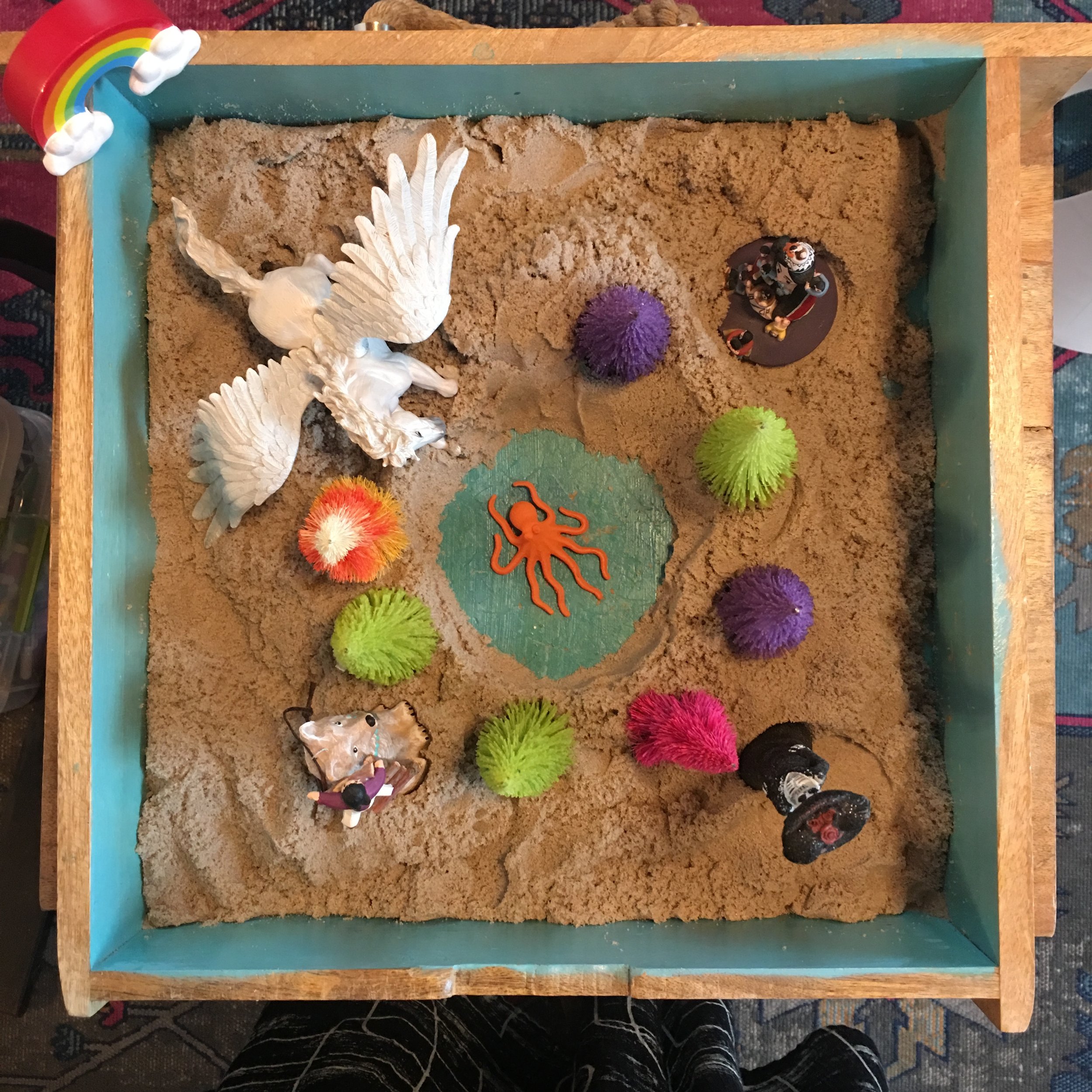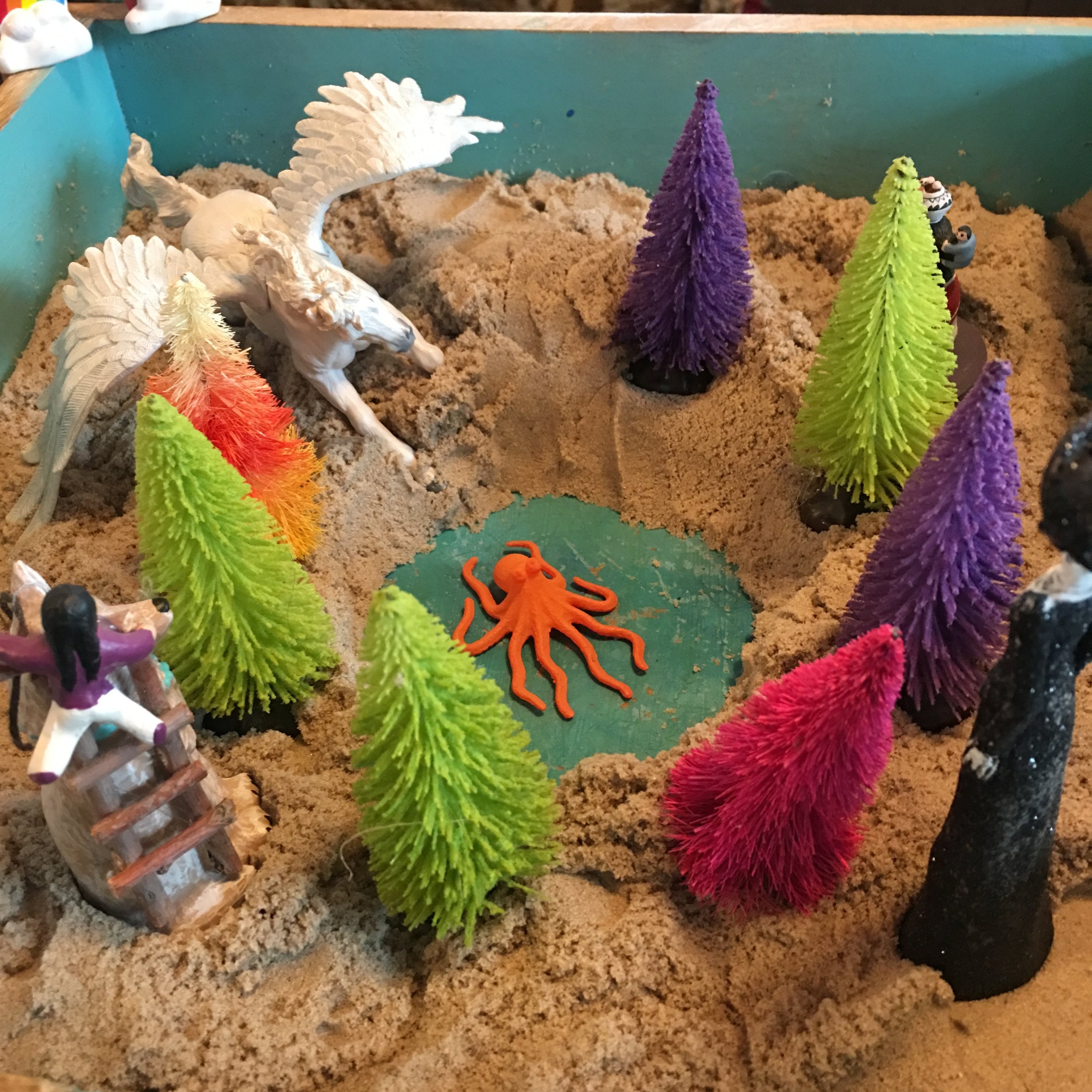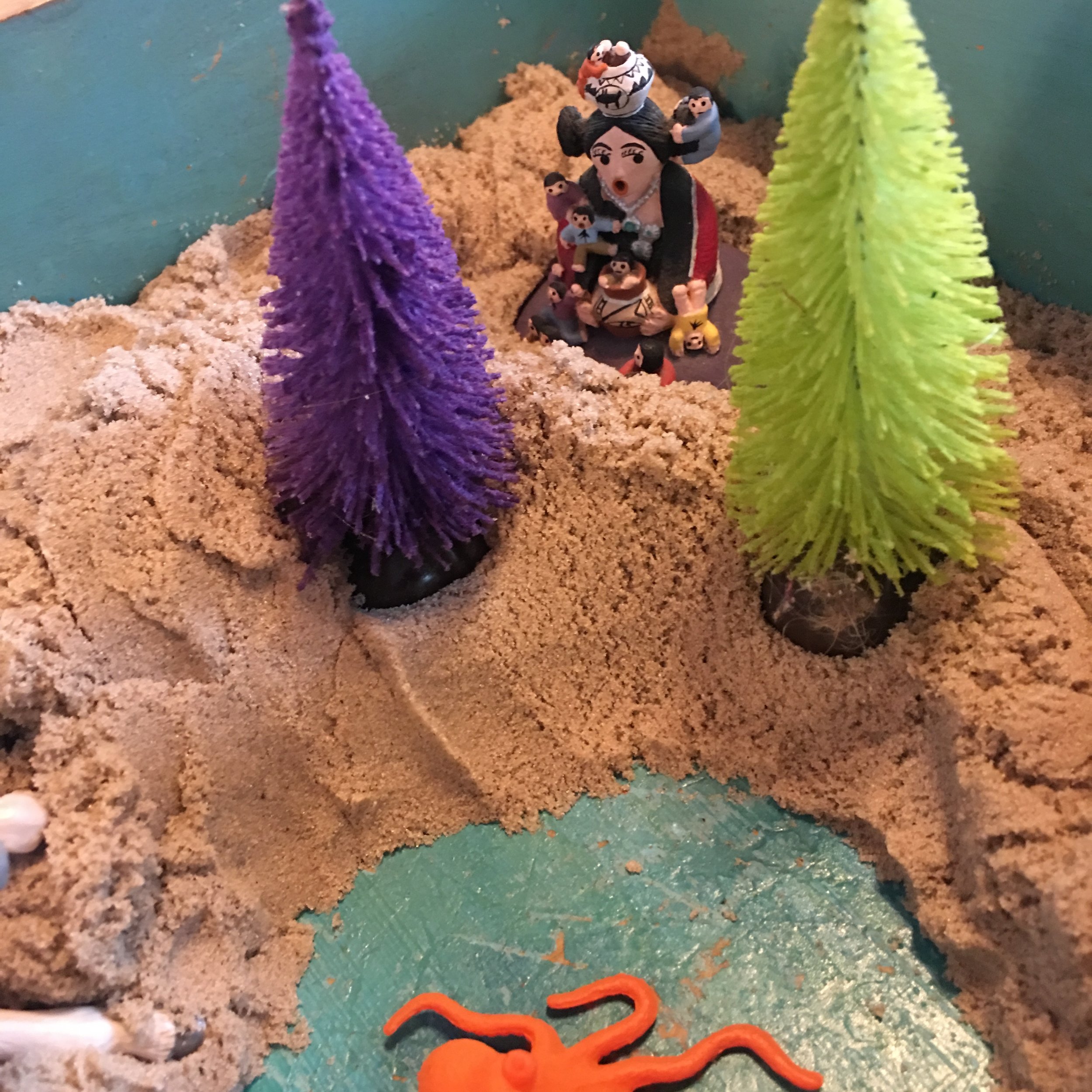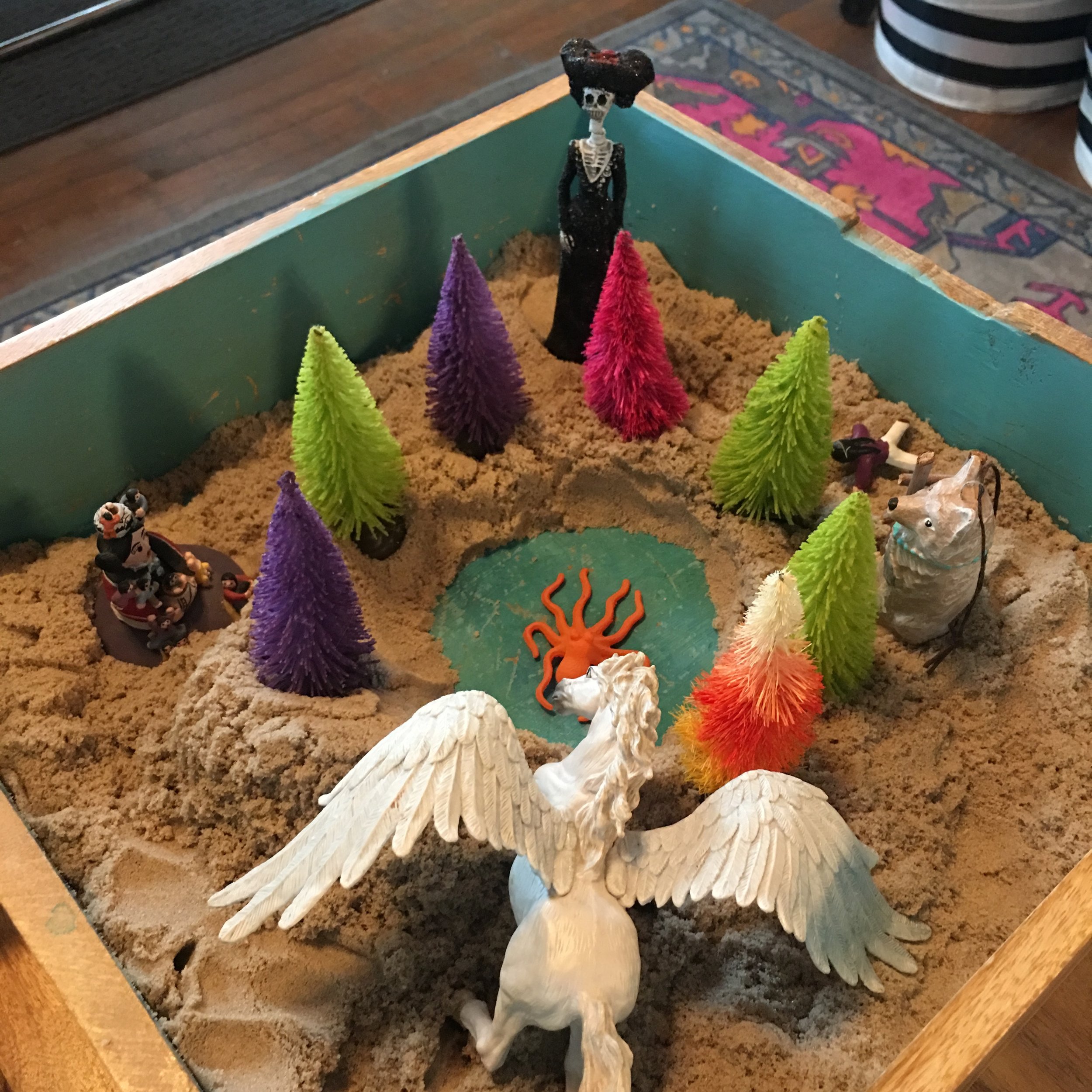Many people might wonder why my office is filled with toys and figures. Maybe they think I am just quirky and just never stopped buying toys (Okay… maybe that would be kind of correct). They might think that these are meant for the children that they sometimes see leave my office. But unless they know about sand tray, they might be completely unaware of how this powerful tool can be used in their own therapy.
It is believed that the first person to use a sand tray in therapy was Margaret Lowenfeld, a British pediatrician in the early 1930s. Dora Kalff combined what she learned from Lowenfeld with her knowledge of Eastern philosophy and Jungian ideas of individuation to create a kind of therapy she called “Sandplay”. Whatever form of Sand tray gets utilized in therapy, at its core, it is the belief that we can use symbols and figures in the sand to create a deeper understanding of who we are, our past, our present, and what we want for our future. I have seen in my work with clients how the sand tray can make what is unconscious, conscious - and how that awareness can not only resonate through our whole system, but create changes in our life.
I was trained in the use of Sand Tray by Dr. Arnell Etherington, a brilliant art therapist and psychologist with a sand tray collection that I can only aspire to (but I am trying!). Sometimes, we have very personal reasons for choosing the figures that find their way into the sand tray. Some sand tray therapists are extremely non-directive and do not offer analysis, but rather listen to how the individual describes the tray and makes personal connections. Other sand tray therapists are much more active - asking questions and offering potential connections to patterns in the client’s life. I am a lover of stories and mythology and enjoy sharing the symbolism of the figures. As in all of my work with clients, I feel that we are in a collaborative partnership, working together to find meaning and uncover truths. I ask permission to share my thoughts and feelings with the understanding that in the end, my client is always the expert on their own life.
Why use sand? Sand is wonderful in how you can build up areas and leave other areas bare. It also allows the individual to expose the bottom of the tray to represent water. Sand can be used to both bury figures as well as to create mountains for others to sit atop. I have chosen to use kinetic sand in my tray because I love the tactile quality of the sand. It is both soothing and sculptural. I have some clients that just love talking while moving their hands around in the sand. Not all memories live in the prefrontal cortex, which is what is most accessible through verbal therapy. The textural nature of the sand lights up different areas of the brain and possibly allows the client to make associations that might not occur otherwise.
So, who can benefit from sand tray therapy? Children, adults, adolescents, families, couples… pretty much anyone open to the process. I often will take pictures of the tray and encourage my clients to also keep pictures. It isn’t uncommon to revisit a tray many sessions later. It gives us not only a visual picture but it also provides us with symbolic language that can be utilized throughout therapy. Why not give it a try?
For more information on Sand Tray therapy, check out these resources.






